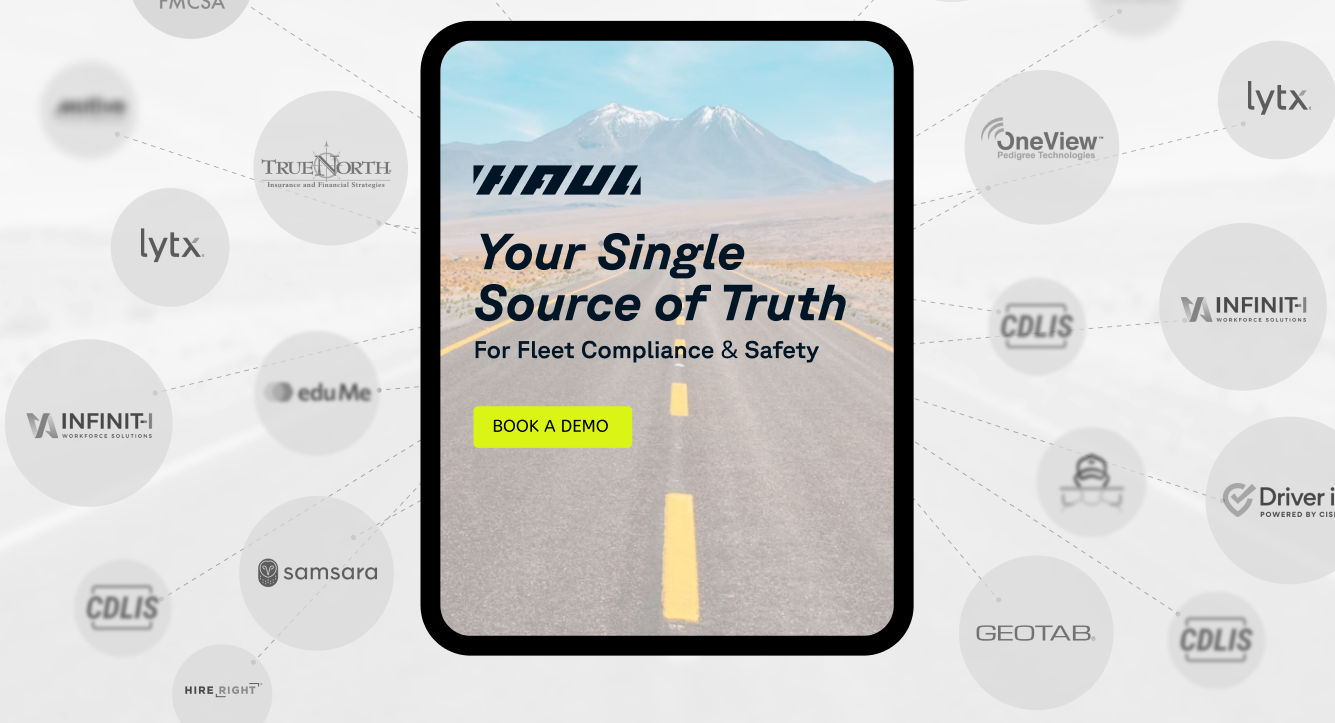Understanding Federal Safety Regulations: A Guide

Navigating the complexities of federal safety regulations can be a daunting task. For fleet managers, logistics directors, and risk management officers, understanding these regulations is crucial.
These regulations govern the safety and compliance of commercial fleets. They are outlined in the Federal Motor Carrier Safety Regulations (FMCSRs) handbook. This guide is a vital tool for those in the transportation and logistics industry.
Section 391 of the FMCSRs, for instance, details driver qualifications. It's a key part of ensuring the safety of your fleet. Understanding and adhering to these regulations can significantly impact your operations.
But understanding the regulations is just the first step. Leveraging technology for real-time insights and alerts is equally important. It can greatly enhance operational efficiency and ensure compliance.
This guide aims to provide a comprehensive understanding of federal safety regulations. It will offer practical advice for compliance and insights into leveraging technology for improved fleet management. Let's embark on this journey towards safer and more efficient fleet operations.
The Role of the Federal Motor Carrier Safety Administration (FMCSA)
The Federal Motor Carrier Safety Administration (FMCSA) plays a pivotal role in ensuring road safety. It develops and enforces regulations that commercial fleets must follow.
Established to prevent commercial motor vehicle-related fatalities, the FMCSA sets standards for fleet operations. These standards include driver conduct, vehicle maintenance, and safe driving practices. By adhering to FMCSA guidelines, fleet operators can mitigate risks and reduce accidents.
The FMCSA also conducts compliance reviews and audits. These reviews assess whether fleets meet federal safety standards. Staying informed and compliant with FMCSA's evolving regulations is vital for fleet managers and logistics directors.
Section 391 of the Federal Motor Carrier Safety Regulations: Driver Qualifications
Section 391 of the Federal Motor Carrier Safety Regulations focuses on driver qualifications. It's crucial for ensuring that drivers are fit for their roles. This section outlines the criteria drivers must meet to operate commercial vehicles.
Fleet managers must verify several aspects of driver qualifications, including:
- Age requirements
- Valid medical certification
- Driving record review
- Skills test completion
Adhering to Section 391 helps maintain a high standard of safety. By ensuring drivers meet these qualifications, fleets reduce risks and enhance compliance. Understanding and implementing these standards is essential for effective fleet management.
Part 391: Ensuring Driver Compliance and Safety
Part 391 lays down specific requirements for driver compliance. It focuses on maintaining driver safety. This section is pivotal in protecting both drivers and the public by setting clear standards.
Key areas covered in Part 391 include:
- Annual driver review and evaluations
- Maintenance of driver qualification files
- Compliance with health standards
- Regular motor vehicle record checks
Ensuring adherence to these standards leads to safer roads. By maintaining a rigorous compliance framework, companies can avoid costly penalties. It also helps build a reputation for safety. This approach benefits both the organization and its drivers.
The Importance of a Federal Motor Carrier Safety Regulations Book
Having a Federal Motor Carrier Safety Regulations book on hand is crucial for all fleet managers. It serves as an essential reference that provides instant access to vital safety guidelines. This book helps ensure compliance with federal standards, facilitating quick decision-making in line with regulations.
Not only does it aid in compliance, but it also supports training initiatives. Regularly updating and consulting the book can enhance the safety knowledge of both managers and drivers. By integrating its use into daily operations, organizations can maintain an ongoing commitment to safety and compliance. This commitment builds trust with both regulatory bodies and clients.
Technology's Role in Compliance: Real-Time Data and ELDs
Technology plays a pivotal role in fleet compliance and efficiency. Real-time data integration allows managers to monitor vehicle health and driver performance continuously. This proactive approach helps in identifying potential issues before they become violations.
Electronic Logging Devices (ELDs) are a cornerstone of compliance, particularly with the Hours of Service regulations. They automate the process of recording driving hours, ensuring accuracy and ease of access. ELDs help:
- Reduce human error.
- Enhance record-keeping.
- Provide immediate compliance reports.

by Aron Visuals (https://unsplash.com/@aronvisuals)
Leveraging these technologies not only keeps fleets compliant but also boosts operational effectiveness. Embracing data-driven insights leads to strategic enhancements, reducing risks and improving overall fleet safety. These tools ultimately streamline processes, contribute to a safer work environment, and uphold company reputation.
Consequences of Non-Compliance: Safety Ratings and Penalties
Failing to comply with federal safety regulations can have serious repercussions for fleets. Non-compliance not only jeopardizes safety but can significantly impact a company's safety ratings. Poor safety ratings may lead to increased scrutiny from regulators and can deter potential business partners.
Moreover, non-compliance can result in hefty penalties and fines, straining financial resources. Persistent violations might even lead to suspension or revocation of operating licenses. These consequences underline the importance of adhering to safety standards, as they help maintain a company's operational integrity and enhance its reputation within the industry.
Beyond the Minimum: Building a Comprehensive Safety Program
Creating a comprehensive safety program means going beyond just meeting the minimum requirements. Fleet managers should strive to establish robust systems for monitoring and enhancing safety. This proactive approach can significantly reduce risk and improve overall fleet performance.
A well-rounded safety program should include various key elements:
- Regular training and workshops for staff.
- Routine vehicle inspections and maintenance.
- Implementation of advanced driver assistance systems (ADAS).
- Continuous evaluation and improvement plans.
By integrating these components, companies can foster a culture of safety that ensures compliance and supports a thriving, efficient operation. Investing in a thorough safety program ultimately enhances driver well-being and protects company assets.
Data Analytics and Predictive Risk Management
The power of data analytics is transforming fleet management. Leveraging data can predict potential risks before they become issues. By analyzing historical trends and patterns, fleet managers can identify problem areas early.
Predictive risk management involves more than just reacting to incidents. It requires anticipating potential challenges based on gathered insights. This proactive stance allows companies to implement preventative measures.
Data-driven decisions enable fleets to enhance safety, reduce costs, and improve efficiency. Incorporating analytics not only aids compliance but also supports continuous operational improvement. Embracing this technology ensures a safer and more efficient fleet environment.
Continuous Education: Training for Compliance
Ongoing training is vital for maintaining compliance in fleet operations. Regular educational programs ensure staff remain aware of evolving regulations. This commitment to learning fosters a culture of safety, keeping compliance top of mind. Investing in continuous education helps prevent violations and enhances operational safety across the fleet.

Fostering a Safety Culture and Transparent Communication
Cultivating a safety-first culture paired with open communication is essential for compliance success. Clear communication ensures everyone understands their roles and the importance of regulations. Encouraging feedback and discussions about safety can enhance employee engagement and drive adherence to safety standards throughout the organization.
Partnering with Technology Providers for Enhanced Efficiency
Collaborating with technology providers can significantly enhance operational efficiency within fleets. These partnerships offer access to advanced tools for monitoring compliance and improving data integration. By leveraging these technologies, companies can streamline operations, boost safety, and maintain compliance more effectively than ever before.

Staying Current: Updates to Federal Safety Regulations
Staying informed on the latest updates to federal safety regulations is crucial for maintaining compliance. Regularly reviewing changes ensures that fleet operations align with the most current standards. Subscribing to industry newsletters and participating in regulatory webinars are effective ways to keep your team updated and prepared.
Conclusion: The Path to Compliance and Operational Excellence
Navigating federal safety regulations can be challenging, but understanding them is vital. By focusing on compliance, leveraging technology, and fostering a safety culture, fleet managers can achieve operational excellence. Continuous education and adaptability ensure that your fleet remains compliant and efficient, ready to tackle future regulatory demands.

